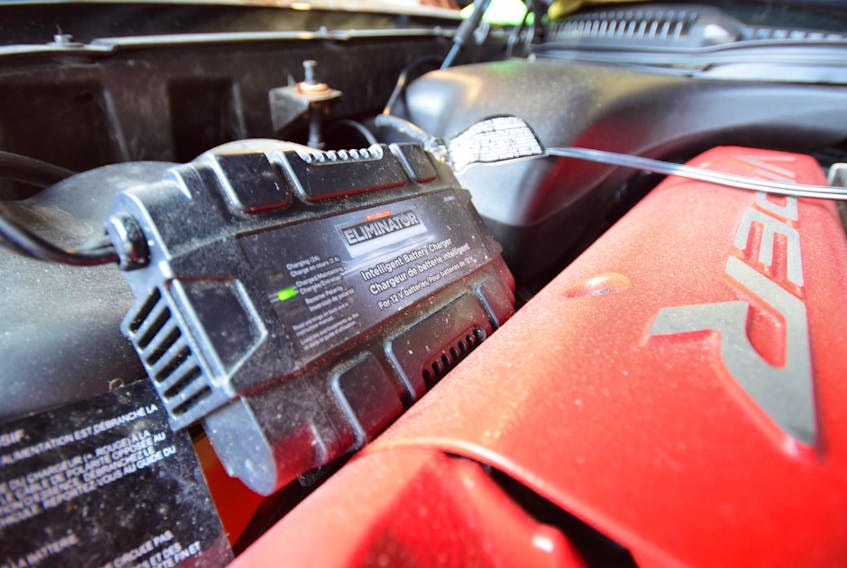You’ve done it! You’ve finally purchased a new car, your order is in, and the factory is preparing to build a Focus, Maxima, Kona, Civic, or Pacifica to your exact specification.
Soon, your new baby will be shipped to the dealership, and you’ll get a phone call saying that it’s ready for you to bring home.
While you’re waiting anxiously, consider picking up the the items below. They’re affordable, useful, and each will help you get more enjoyment from your ride, care for it better and with less effort, and maybe even help maintain its resale value at the highest possible levels.
3-ringed binder with plastic sleeves
Keeping all of your service records, receipts, and any other documentation relating to the ongoing care and maintenance of your vehicle is a very good idea.
Not only is having easy access to all such documentation fairly vital in the event you need a warranty-related repair, it can also make for a faster sale down the line, if you ever sell your vehicle privately, or trade it in.
Oil changes. Tune ups. Inspections. Recalls. New tires and brakes. The process of owning and caring for your vehicle can result in quite the paper trail. Many drivers don’t keep this documentation at all and, in many cases, those who do, typically just shove it all haphazardly into the glovebox.
It’s likely that you’ll need to refer to these documents down the line, or that you’ll need to show them to someone. So, consider using a binder with plastic three-ringed inserts, to keep the paperwork organized, protected and sorted. Not only can this save you time and headaches, it’s also impressive to any used car shopper who might consider buying your new vehicle some day.
Use one plastic sleeve per receipt or printed record, arrange chronologically, and you’ll have the best-looking, most complete, and easiest-to-use reference service records anyone’s ever seen.
A trickle charger
A battery trickle charger slowly and steadily applies power to your vehicle’s battery when it’s not being driven. Consistent use of a trickle charger during periods where you won’t be driving your vehicle for more than a few days at a time can help prevent dead batteries, help make your battery last considerably longer, and help it start the engine more effectively in the cold.
You can get a trickle charger for $30 to $50 or so and, if you know how to pop your hood and find your battery connections, you can hook it up as needed in about 30 seconds. If it ever saves you just one tow truck call, it’s probably paid for itself.
Even more importantly, a trickle charger can keep your battery from getting weak, which can cause numerous irritating problems across a wide range of vehicle systems. Using a trickle charger is a cheap way to prevent all sorts of headaches down the line.
Portable inflator and power pack
These come in various shapes and sizes and chances are you’ll appreciate having one, regularly. In general, these portable power packs are plugged into a household outlet to charge their built-in battery.
Take the unit with you, and you’ve got enough juice to boost a few dead batteries, charge numerous electronic devices while camping (or in case of an emergency), inflate tires and beach toys, and more.
Most of these units are small enough to be left in the trunk of the vehicle, or on the rear-seat floor, but avoid storing them in the vehicle when it’s extremely hot or extremely cold.
For quick and easy tire pressure checks and adjustments, many power packs now offer digital inflators, which allow the use to connect the inflator to the tire, key in their desired tire pressure, and walk away.
Floor protection
Do not underestimate the damage and wear that the Canadian climate can take on your ride’s carpeting — especially in winter. Here, a constant barrage of abrasive and corrosive salt, moisture, dirt and sand attacks your carpeting and, over time, wears it out, leaves it looking worn, causes unpleasant smells and discolouration, and may even begin promoting rust to the metal floor beneath.
The solution? Form-fitting rubber mats, custom made to perfectly fit the vehicle you’re buying. These can be pricey, though various options are available. They all do the same important thing, providing a thick, waterproof barrier between your vehicle’s carpeting and floor, and all the stuff you and your family track inside that could damage it over time. This helps you maintain the appearance of your ride, which helps it keep more of its resale value.
Extra oil filters
This one may be optional, depending on where and how you’ll have your vehicle serviced. When it’s time for an oil change on your new ride, you’re best to use a factory-approved oil filter that’s provided by your dealership.
Often, pricing is comparable to more generic filters from your local parts store, and some dealers sell oil filters by the case or box, at a discount.
Why keep extra oil filters? Simple.
If you need an oil change but can’t make it to the dealer, you might change it yourself, or have a local lube-shop do it for you.
But here’s the thing: If a non-factory oil filter fails and ruins your engine (which is more common than you think), that damage is not covered by warranty, since warranties do not cover damage caused by the use of non-factory approved parts — like generic oil filters.
For the duration of your vehicle’s warranty, you’ll want to make sure you’re always using a factory-approved oil filter, just in case.









